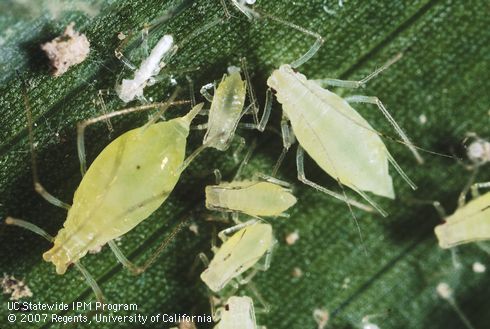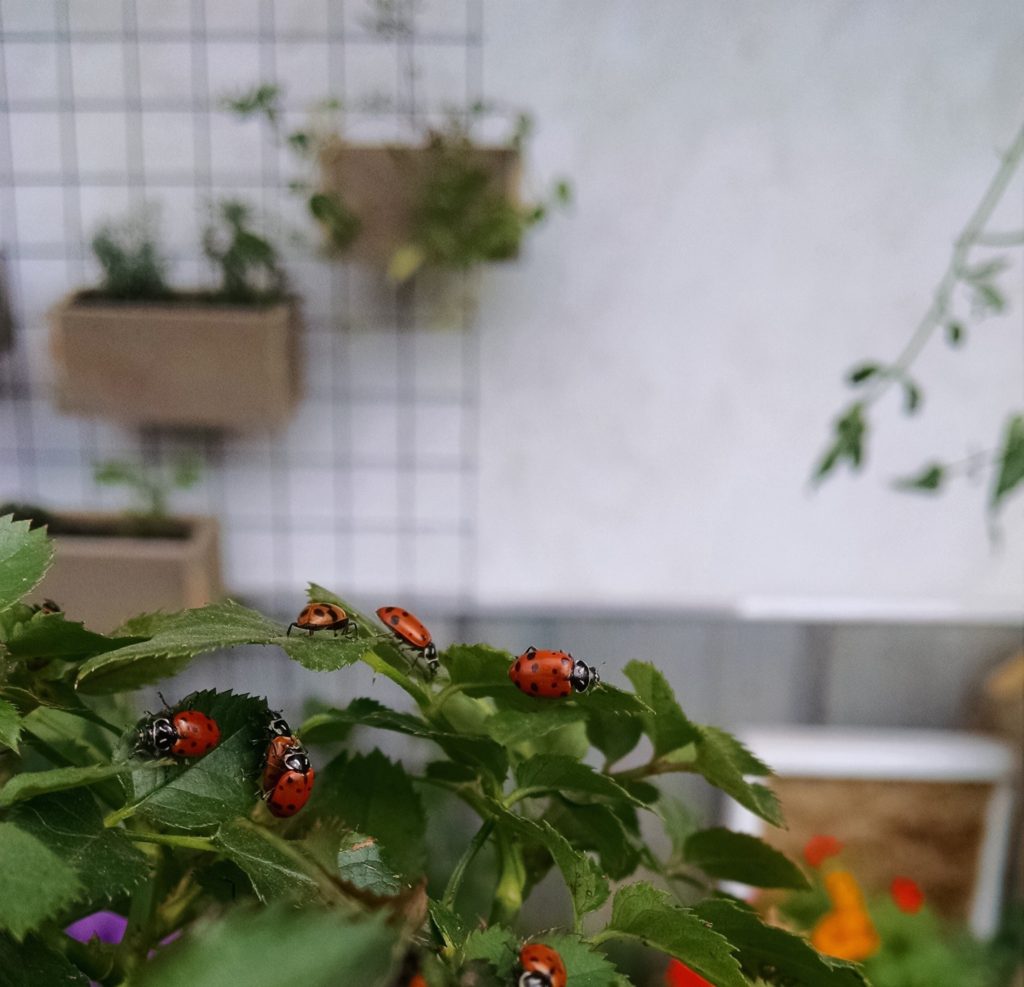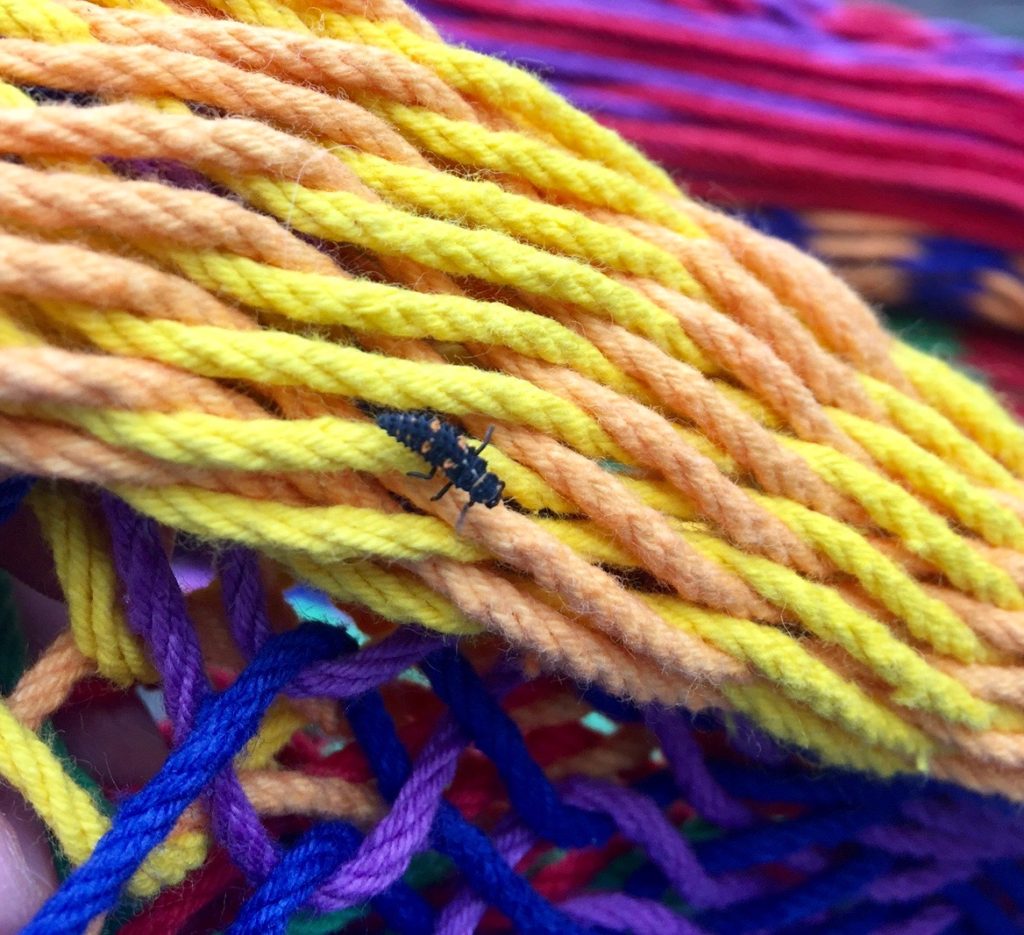When Aphids Attack!
When Aphids Attack! Incorporating Beneficial Insects
Build.Sow.Grow’s greenhouse gardening philosophy is to cultivate an ecosystem. Unlike many greenhouse growers who strive for a sterile environment, we invite pollinators such as bees, wasps, moths and butterflies inside to help our plants thrive. We encourage installing wide gauge screens on vent openings or windows to allow outside insects in. Purchasing and releasing beneficial insects inside the greenhouse is another effective way to establish a population of helpful bugs.

It is very important to have a strong population of beneficial predatory insects to combat the virtually unavoidable issue of pests like aphids. Even at 9,000 ft of elevation deep in the cold climate of the Rocky Mountains, aphids have appeared in the greenhouse garden. There are thousands of varieties of pear-shaped aphids ranging in color from green to yellow to black, but they all love to suck the fluids out of the stems, leaves and tender new growth of plants. Despite the diversity of aphids, the management of them is similar.
Here are some PESTICIDE-FREE methods for aphid control:
- Cut – Cut off and dispose of heavily infested growth.
- Squish – Aphids are soft bodied insects that are easily squished between your fingers on the leaf of the plant. This is a very effective method in the early stages of aphid appearance in a smaller garden area. Examine plants daily and squish aphids before an infestation occurs.
- Spray – Spray your plants with a diluted solution of organic Neem oil and water. Neem oil is a non-toxic naturally occurring pesticide that is extracted from the seeds of the neem tree. Neems works by disrupting the eating and reproductive abilities of the aphids when they feed on a neem treated plant.
- Blast – Some people have found success by using a high pressured spray from the garden hose to knock aphids off plants. Unfortunately, some eventually find their way back onto the plants.
- Introduce Beneficial Insects – Ladybugs, also known as lady beetles or ladybird beetles, are a great addition to a contained greenhouse environment. When the above methods weren’t reducing the aphid population enough, we purchased some reinforcements and released hundreds of ladybugs in the greenhouse. Build.Sow.Grow. has had excellent results with ladybugs managing the aphids. Within a couple weeks there was hardly an aphid to be seen. We are thrilled to be finding new ladybug larvae inside the greenhouse which means they have established themselves and have become a part of the greenhouse ecosystem! Ladybugs can oftentimes be purchased at your local gardening store or ordered online. Green Lacewings are another effective beneficial insect to add to gardens with aphid problems.

Aphid Adults and Nymphs

Beneficial Ladybugs

Ladybug Larva

Ladybug Helping to Pollinate




Great article.
Love the organization of options.
Keep it up